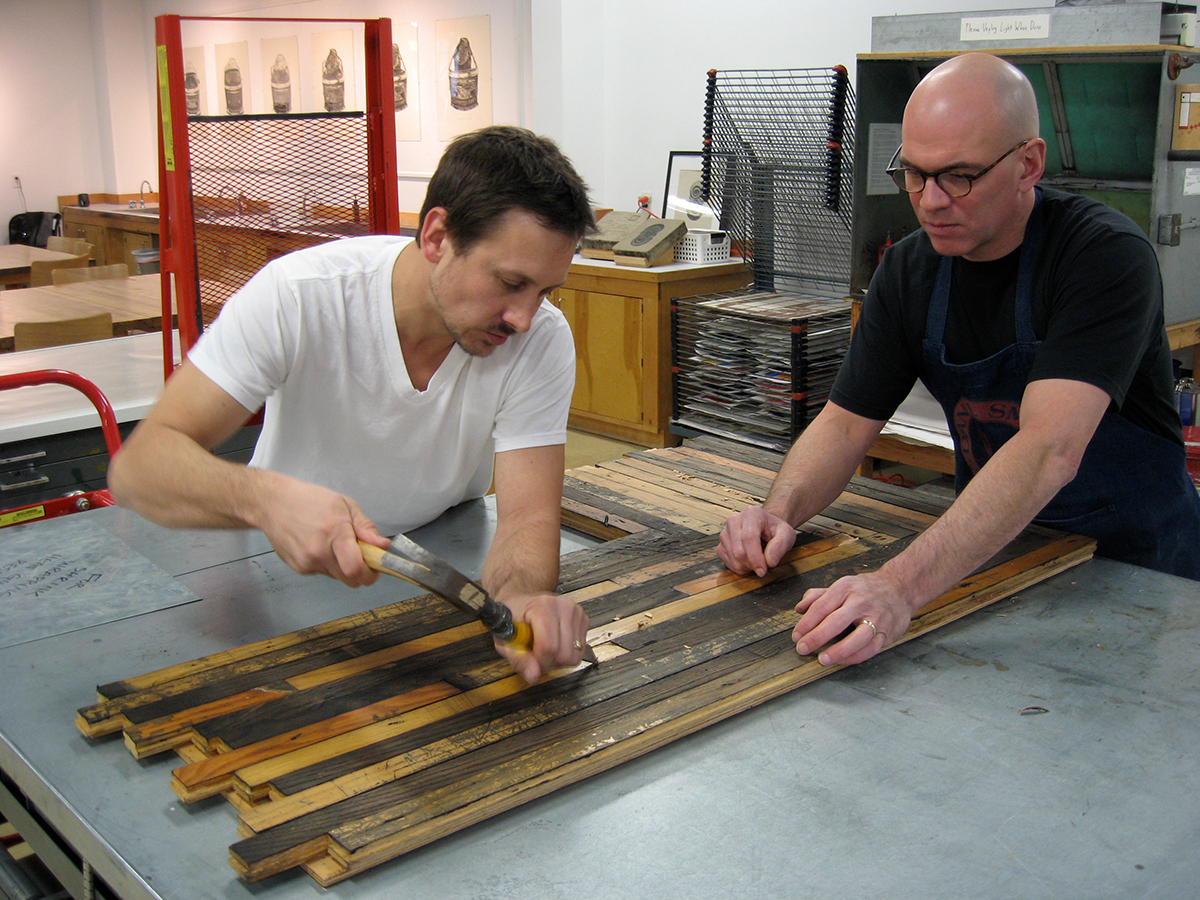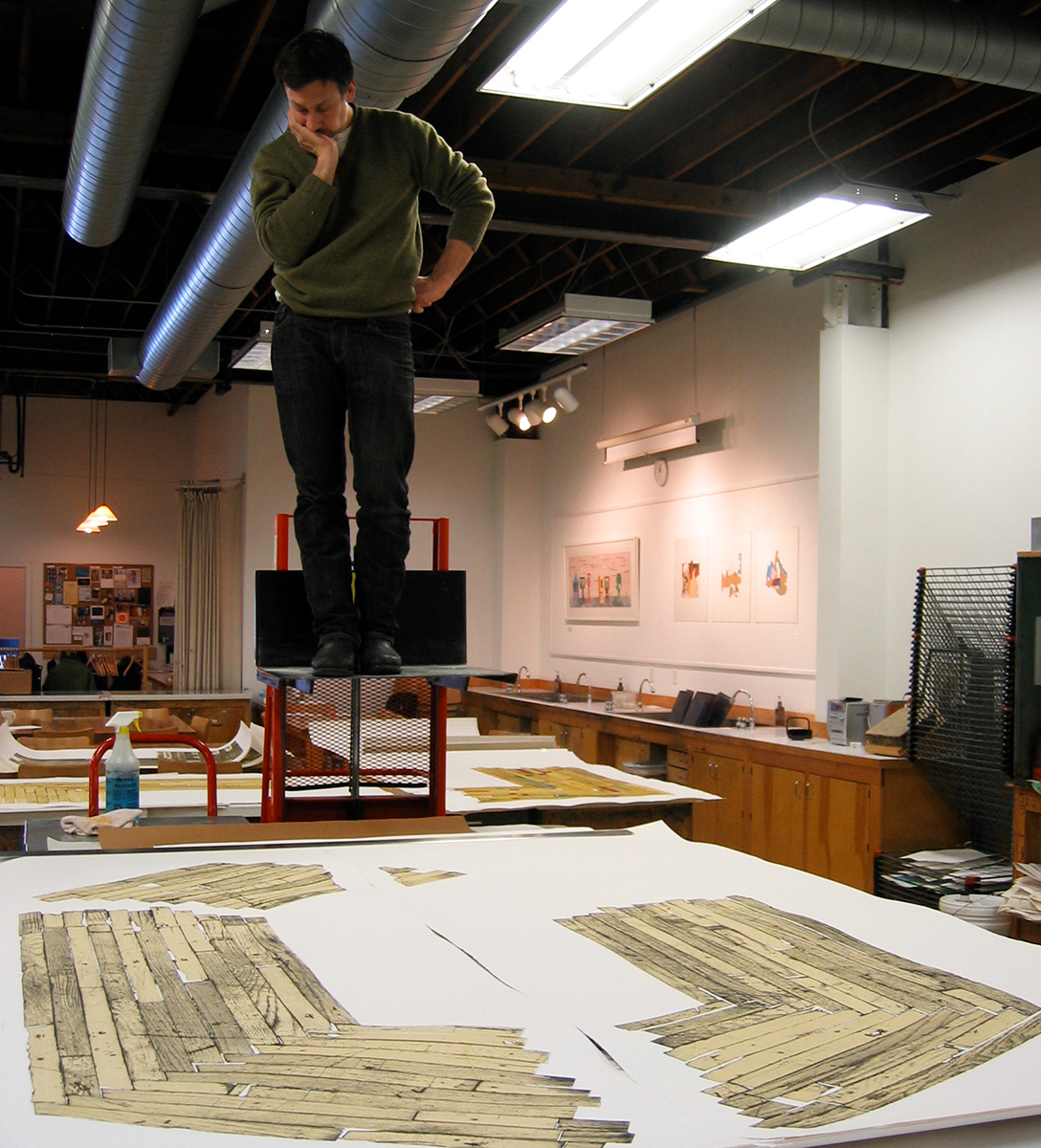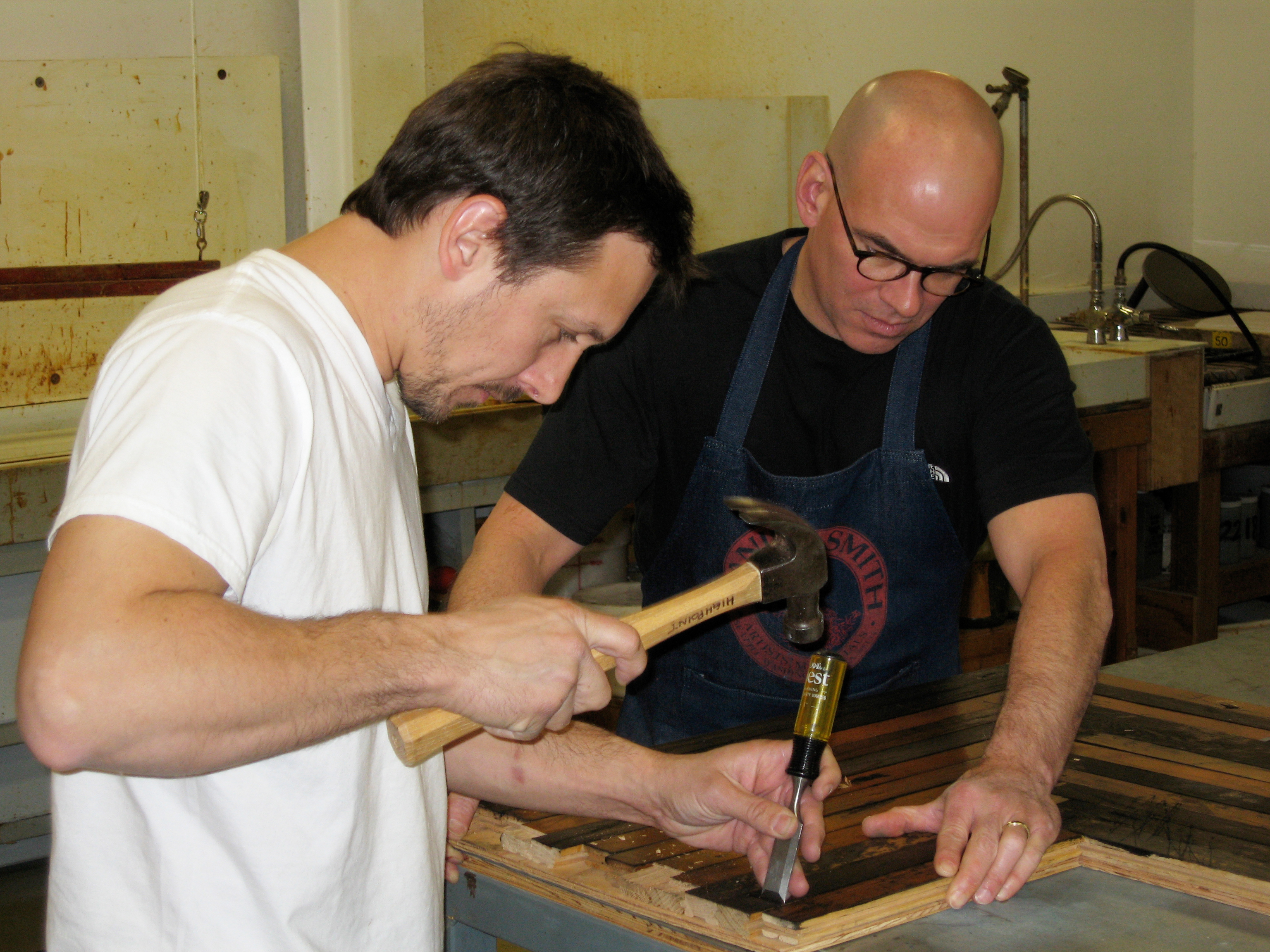
Born 1968, Minneapolis, Minnesota
As part of an exhibition at New York’s SculptureCenter in the early 2000s, Rob Fischer climbed inside his house-shaped sculpture, which was suspended from a gantry, and made it careen through the space as fellow artist Aaron Spangler sat next to him on guitar, singing his own lyrics to Gordon Lightfoot’s “The Wreck of the Edmund Fitzgerald.” Fischer made this sculpture from building scrap; his other materials come from abandoned buildings, junkyards, and the rural landscape. He has scavenged rusted swing sets, rotting windows, an antenna tower, old televisions, fifty-five-gallon steel drums, the sleeper cab of a truck, and airplane parts. His piece They Shoot Horses, Don’t They? (2008) incorporates an old rowboat. He is drawn to the histories of his materials as well as the hopefulness they imply, the idea of reconstitution and rebirth. That idea extends to his sculptures, which he will cut up and recycle; for 30 Yards (Minor Tragedies Dissected), 2005, he turned a dumpster into a massive shelf unit and filled it with parts of seven other sculptures, including a work he exhibited at the 2004 biennial at the Whitney Museum of American Art, New York. “There’s something beautiful, sad, and complex about the end of one thing and the beginning of another,” he says.1

Fischer earned a BFA (1993) from the Minneapolis College of Art and Design. His mother ran a day care center in their Minneapolis house, and his father was an Air Force–trained machinist who specialized in hydraulic parts. Fischer spent his childhood around tools, and he allows that now, “I can build just about anything.” He remembers being struck from a young age by a decaying house he saw every summer when traveling to the family cabin near Pequot Lakes, Minnesota. In time, trees grew out of the roof. His first house sculpture, made at MCAD, had sheet metal cladding that he peeled back, and a water system that ensured the roof would rot. “Destruction can be so beautiful and evoke so much feeling”—feelings of loneliness, pain, and longing, he says. The 2008 Highpoint Dodgeball (cat. no. 145) was inspired by maple gym flooring salvaged from a school in southern Minnesota, flooring Fischer later used in a vast wall mural at the Hammer Museum, Los Angeles. Dodgeball uses an inking technique—with a matrix composed of recycled oak boards—and to imitate (random) gym floor markings. The work suggests that however much we order our lives, chance can intervene.

Fischer moved to New York City in 1999. He has had residencies at Art Omi, Ghent, New York (2016); Chinati Foundation , Marfa, Texas (2011–12); Art in General, New York (1999); and more. In addition to the shows mentioned above, he has exhibited at the Corcoran Gallery of Art, Washington, D.C.; Essl Museum, Vienna; Whitney Museum at Altria, New York; Aldrich Contemporary Art Museum, Ridgefield, Connecticut; Museum of Contemporary Art Santa Barbara, California; Museum of Contemporary Art Chicago; Brooklyn Museum of Art, New York; and Walker Art Center, Minneapolis. He has received grants from the Bush Foundation (1998) and Minnesota State Arts Board (1996), and a Jerome Foundation Fellowship for Emerging Artists (1995–96). Fischer is married to the artist and writer Sara Woster and maintains studios in Brooklyn and northern Minnesota.
—Marla J. Kinney
Notes
Rob Fischer, phone conversations with the author, June 2020. ↩︎